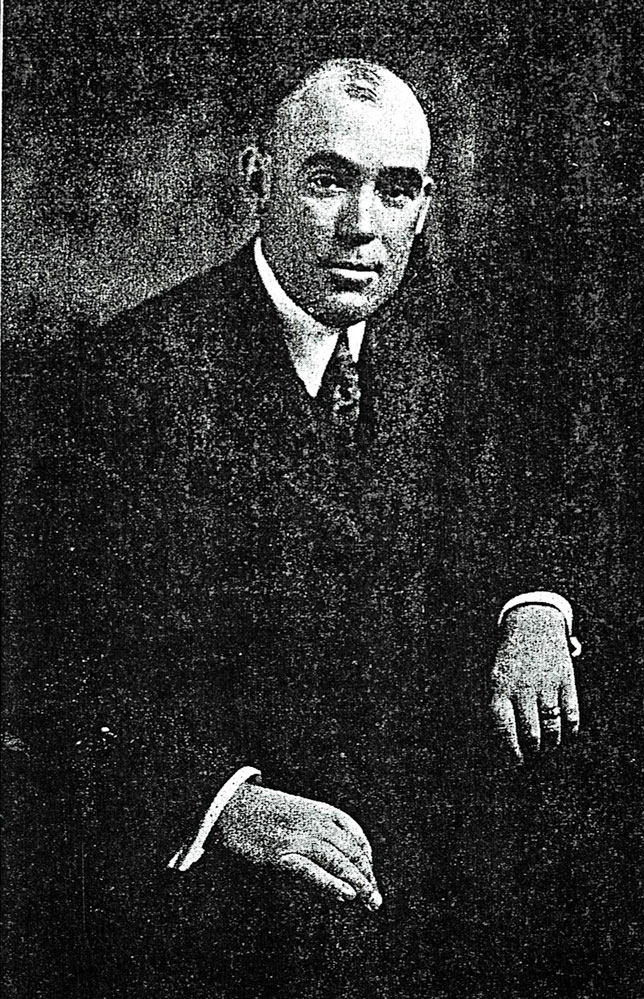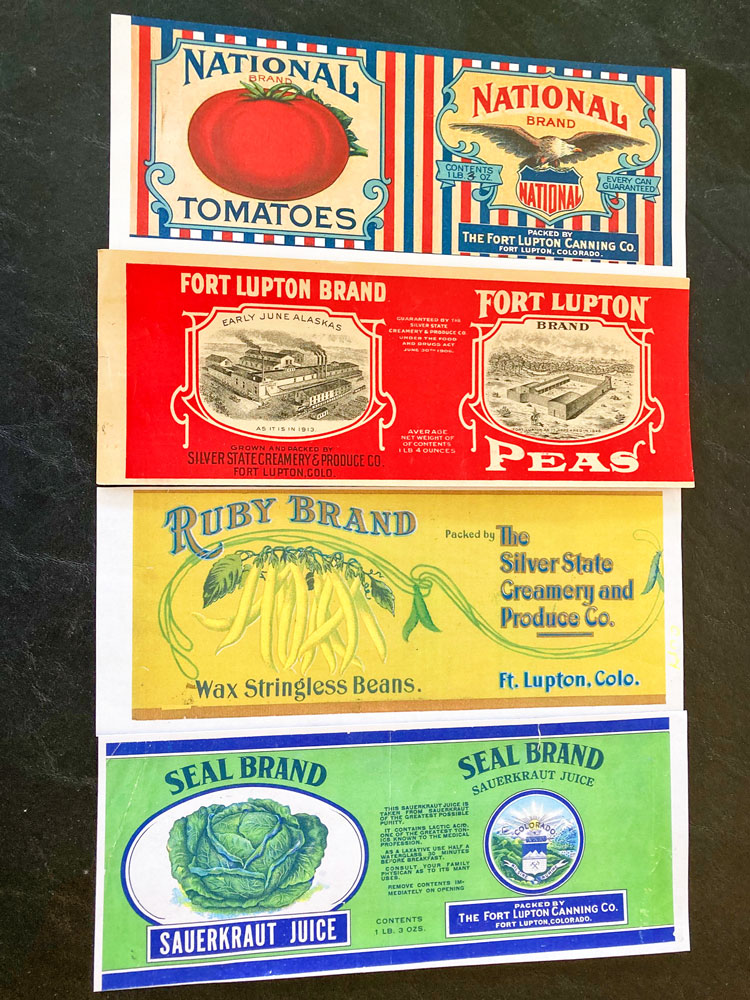Frink Inc. – pickle baron and cheese wiz
By Joe Gschwendtner; courtesy photos

Clarence B. Frink, in full. His business was an anchor of commerce in Larkspur for six decades. Photo courtesy of “History of Colorado” and Douglas County Libraries archives.
This tale of two towns begins with Junietta Patience Freelove Peckham and Orello E. Frink (O.E.), who were married in DeRuyter, New York in 1877. Both driven and bold, they went west with their three children, making Denver home.
O.E. succeeded early in meat retailing and milk processing. In 1893, the monetary panic crushed their Denver business, but not their Fort Lupton Creamery. After moving there in 1895, the Frinks acquired another, the Bendell Creamery.
Born in 1878, Clarence Benjamin (C.B.), their only son, was educated in dairying in Ohio, Wisconsin, and Greeley, apprenticing in Fort Lupton. He married Ellen Cheely of Golden and they moved to Larkspur in 1902. Dairying was then Douglas County’s biggest industry, with butter production exceeding 750,000 pounds annually.
Larkspur already had a creamery; Richard Fosdick built it in 1896. In 1901 it suffered a devastating fire. After rebuilding, Fosdick sold it to Frink and his partner, C.G. Carlson, a Fort Lupton connection. Making the Larkspur creamery headquarters, the Carlson and Frink Creamery grew its business smartly and aggressively.
C.B’s education in dairying and “leg up” family experience virtually assured his early success. Among competitors, C.B.’s methods were cutting edge and considered best practices of the day. Frink facilities were also scrupulously clean and modern.
By 1916, the partners incorporated. Their quality product line and reputation went well beyond Colorado into Texas and New Mexico. Frink’s Black Canyon Cheese and sweetened condensed milk became legendary. Branch creameries operated in Sedalia, Castle Rock, Cherry, Kiowa, Calhan and Monument. There was even a plant in Manassa.

Four of the labels used at Silver State cannery in Fort Lupton. Tomatoes were canned first, then much more – including sauerkraut juice pictured here. Labels courtesy of Fort Lupton Museum.
Back in Fort Lupton, O.E. had seized a processing opportunity, founding the Silver State Canning and Produce Company. Close to rich South Platte bottomlands which were irrigated by the Brantner Ditch, the oldest irrigation system constructed by pioneer farmers, they started canning tomatoes, ketchup and corn, later adding snap beans, peas, pickles, pumpkin and squash to the inventory. The Frinks were especially proud of their peerless packed pickles, even promoting them on company letterhead.
In 1908, the Frinks inaugurated “Tomato Day,” inviting the entire town to a party. By then, Silver State was already Fort Lupton’s biggest employer, owning 13 farms with 1,000 producing acres.
In 1920, Carlson tendered his Frink Creamery stock making C.B. sole owner. The Frinks were also Larkspur’s biggest employer. The event of the year was the company picnic on the grounds of the family home. Colorado’s Governor Ralph Lawrence attended the 1939 event.
O.E. died unexpectedly in 1916. Management succession was handled seamlessly via his wife and daughter. C.B. died in the summer of 1945 and his dairy withered.
Businesses have cycles, and Frink Creamery was no exception. Nature delivered the knockout blow on June 16, 1965 when the South Platte River flooded in one of the worst natural disasters in metro Denver’s history and leveled the Larkspur plant to its foundation.
